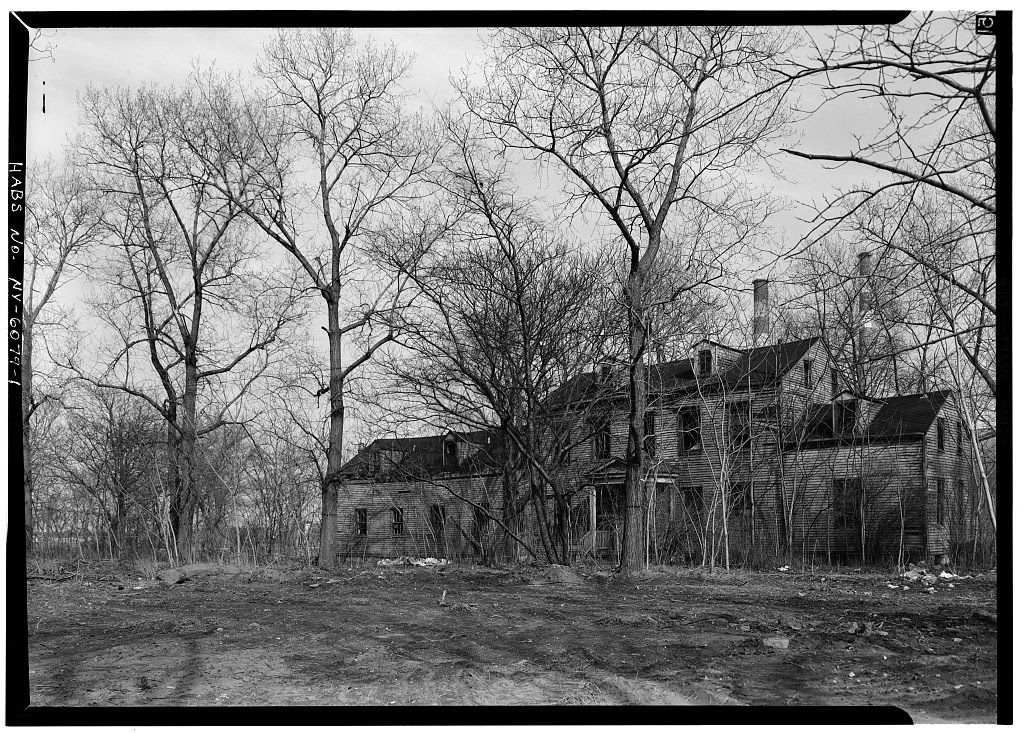Thursday, September 15, 2022 – THE HOUSE IS OPEN FOR VISITORS WEDNESDAY -SUNDAY 11 AM T0 5 PM


FROM THE ARCHIVES
THURSDAY, SEPTEMBER 15, 2022
THE 782nd EDITION
A REMINDER
OF
BLACKWELL HOUSE
HISTORY
EPHEMERAL NEW YORK
One of New York’s last 18th century farmhouses sits on an East River island
August 26, 2022
After the Revolutionary War, two financially strapped New York City brothers named James and Jacob Blackwell tried to find a buyer for the East River island they had inherited from their father.
One of New York’s last 18th century farmhouses sits on an East River island
August 26, 2022
After the Revolutionary War, two financially strapped New York City brothers named James and Jacob Blackwell tried to find a buyer for the East River island they had inherited from their father.

| A 1784 newspaper advertisement placed by James Blackwell described the island’s selling points.The island, “was about four miles from the city,” the ad stated, according to the Landmarks Preservation Commission report from 1976. Among the features were “’two small Dwelling Houses, a Barn, Bake, and Fowl House, a Cyder Mill,’ a large orchard, stone quarries and running springs.” |
| Despite the amenities, the island didn’t sell—or perhaps the Blackwells fortunes changed, and they decided to hang onto this two-mile long private strip between Manhattan and Queens.Whatever the reason, From 1796 and 1804, James Blackwell built a spacious farmhouse that still stands on their former island, now called Roosevelt Island.The clapboard Blackwell House, with typical late 18th-century touches like a wide porch, separate kitchen wing, gabled roof, root cellar, and dormer windows, is the only building that survives from the two centuries or so when Roosevelt Island was privately owned, states the LPC report. It’s also the sixth oldest still-extant farmhouse in New York City, a charming relic still in its original spot facing the East River. It dates from the same era as the Dyckman Farmhouse in Northern Manhattan as well as Gracie Mansion across the East River.A farmhouse isn’t what you’d expect to find on a spit of land better known as a notorious 19th century repository for Gotham’s poor, sick, and criminal. But before New York City purchased the island from the Blackwells in 1828 and built a penitentiary—then an almshouse, workhouse, and hospitals for people afflicted with smallpox, mental illness, and a variety of incurable diseases—the island was farmland. |

The Blackwell farmhouse, about 1933, before a wing off the house was demolished
The first European settlers in the 17th century were Dutch, who called it Varckens Eylandt, or Hog Island in English, after the pigs raised there. “It was purchased from two [Native American] chiefs by Governor Wouter van Twiller in 1637 and was already being farmed by 1639 under land grants from the Amsterdam Chamber of the West India Company,” explains the LPC report.
The Blackwells become owners when Mary Manning Blackwell inherited it from her stepfather, Captain John Manning. Captain Manning got it through a land grant from Richard Nicholls, the first British colonial governor of New York and one of the commanders who seized New Amsterdam from the Dutch in 1664.

The house on what was then called Welfare Island, 1950
After the city took over Blackwell’s Island, the farmhouse was used to house administrators of the many institutions that didn’t begin to close until the end of the 19th century, as the terrible conditions inside them became known to an outraged public.
During the 20th century, the house fell into disrepair, like so many other buildings on what was renamed Welfare Island. Restored and rehabbed (minus an original wing) in the early 1970s—with the island renamed for FDR—it now houses artifacts and documents related to Roosevelt Island history and is open to the public.
Imagine the views the house had to the Manhattan country estates along the East River (the house would line up to about East 65th Street today, across from the circa-1799 Mount Vernon Hotel, a popular summer resort) and the sailing ships of New York’s busy harbor!
BLACKWELL HOUSE IS OPEN WEDNESDAY TO SUNDAY
11 A.M. TO 5 P.M. FOR VISITS OF THE EXHIBITS CURATED BY THE R.I.H.S. (CLOSED 2 RO 3 P.M.)
TO READ THE FULL LANDMARKS PRESERVATION COMMISSION DESIGNATION REPORT:
http://s-media.nyc.gov/agencies/lpc/lp/0912.pdf
Thursday Photo of the Day

Text by Judith Berdy
Thanks to Bobbie Slonevsky for her dedication to Blackwell’s Almanac and the RIHS
Thanks to Deborah Dorff for maintaining our website
Edited by Melanie Colter and Deborah Dorff
All image are copyrighted (c) Roosevelt Island Historical Society unless otherwise indicated
Sources
EPHEMERAL NEW YORK
NYC LANDMRKS PRESERVATION COMMISSION
ROOSEVELT ISLAND HISTORICAL SOCIETY
FUNDING PROVIDED BY ROOSEVELT ISLAND OPERATING CORPORATION PUBLIC PURPOSE GRANTS CITY COUNCIL REPRESENTATIVE BEN KALLOS DISCRETIONARY FUNDING THRU DYCD


Copyright © 2022 Roosevelt Island Historical Society, All rights reserved.Our mailing address is:
rooseveltislandhistory@gmail.com

Leave a comment